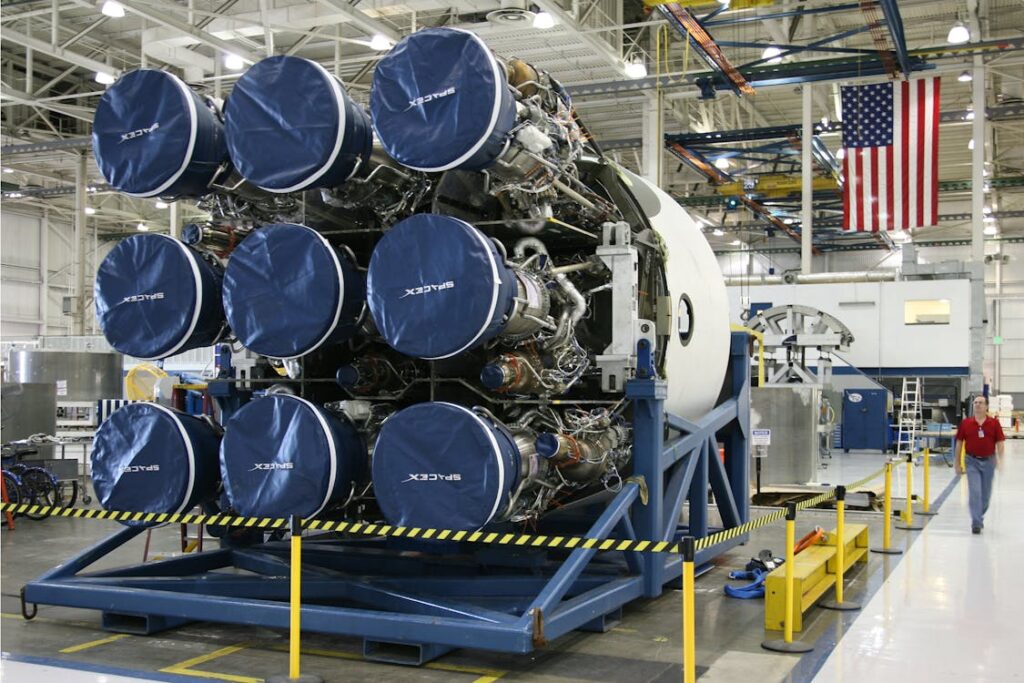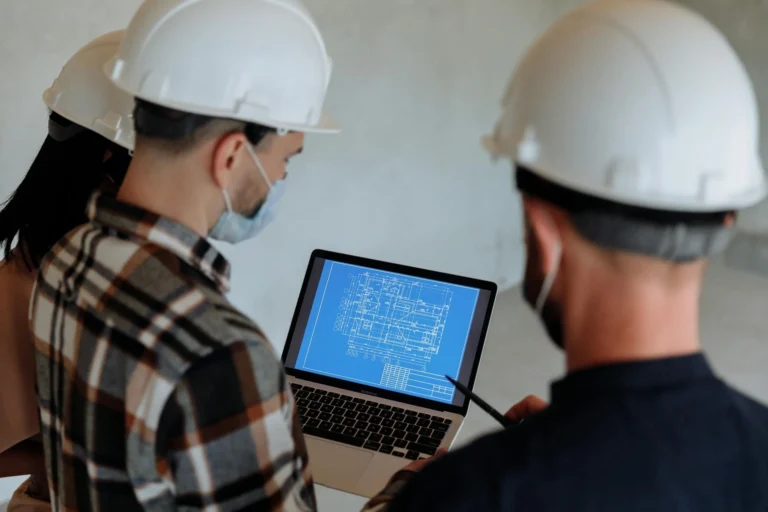Humanity’s relentless pursuit of knowledge and exploration has been a testament to our capacity for innovation and ingenuity throughout history. Since the dawn of space exploration, we have embarked on a journey of discovery, pushing the boundaries of what was once thought impossible. Over the decades, our endeavours have evolved from tentative steps into the cosmos to ambitious missions exploring the far reaches of our solar system and beyond. Central to our aspirations for space exploration is the imperative of construction, a cornerstone upon which our dreams of sustained presence beyond Earth rest. As we set our sights on establishing habitats, infrastructure, and ultimately, thriving colonies on celestial bodies like the Moon and Mars, the importance of advancing the field of space construction cannot be overstated. In this blog, we embark on a voyage through the challenges, current technological innovations, and the tantalising future prospects that await us as we endeavour to build beyond the confines of our home planet.

Challenges of Construction in Space
Constructing habitats, infrastructure, and facilities in the harsh environment of space presents a unique set of challenges that require innovative solutions. Unlike on Earth, where we benefit from a protective atmosphere, space is a vacuum devoid of air pressure. This lack of atmosphere means there is no natural shielding from harmful cosmic radiation, posing significant risks to human health and equipment integrity. Traditional construction methods reliant on gravity, such as pouring concrete or stacking bricks, are rendered ineffective in microgravity environments.
Microgravity, a condition where gravitational forces are significantly weaker than on Earth, further complicates construction efforts. Without the downward force of gravity to hold materials in place, conventional construction techniques like welding and bolting become impractical. Additionally, the absence of gravity alters the behaviour of liquids, gases, and granular materials, making it challenging to control the flow and positioning of construction materials.
Moreover, the cost of transporting materials from Earth to space is prohibitively expensive. Every kilogram of payload sent into space incurs exorbitant costs, often ranging in the thousands of dollars. This expense stems from the need for powerful rockets to overcome Earth’s gravity and propel payloads into orbit. As a result, relying solely on Earth-sourced materials for construction projects in space is impractical and economically unsustainable in the long term.
Current Technologies and Approaches
Despite the formidable challenges of construction in space, significant progress has been made in developing technologies that promise to revolutionise extraterrestrial building endeavours. Among these advancements, in-situ resource utilisation (ISRU) stands out as a particularly promising approach. ISRU involves the extraction and utilisation of materials found on celestial bodies like the Moon or Mars for construction purposes. For instance, lunar regolith, the loose material covering the Moon’s surface, holds valuable resources such as oxygen, silicon, and metals. Through innovative processing techniques, these materials can be extracted and transformed into building materials, reducing the reliance on costly and limited Earth-sourced supplies. ISRU not only addresses the logistical challenges of transporting materials from Earth but also opens up the possibility of sustainable, self-sufficient construction on other planetary bodies.
Another groundbreaking technology shaping the future of space construction is 3D printing. This additive manufacturing process involves depositing successive layers of material according to a digital design, enabling the fabrication of complex structures with precision and efficiency. 3D printing offers numerous advantages for space construction, including the ability to customise designs on-demand, minimise material waste, and streamline construction processes. NASA has been at the forefront of exploring 3D printing for space applications, conducting experiments to demonstrate its feasibility for building habitats, infrastructure, and even spare parts for spacecraft. With continued advancements in 3D printing technology and materials science, the potential for on-demand, on-site construction in space is within reach, paving the way for cost-effective and adaptable construction solutions beyond Earth’s atmosphere.
Robotic construction represents another promising avenue for overcoming the challenges of building in space. Autonomous robots equipped with advanced sensors, manipulators, and artificial intelligence capabilities can perform a wide range of construction tasks with precision and efficiency. These robotic systems are capable of assembling modular components, performing maintenance and repairs, and even conducting intricate construction operations without direct human intervention. By leveraging robotic construction techniques, space agencies can minimise the risks associated with human spaceflight, reduce the need for extravehicular activities (EVAs), and accelerate construction timelines. Furthermore, robotic construction enables continuous operation in harsh environments where human presence may be limited or impractical, opening up new possibilities for sustained exploration and habitation beyond Earth.
In summary, the combination of in-situ resource utilisation, 3D printing, and robotic construction represents a paradigm shift in the way we approach construction in space. These innovative technologies offer practical solutions to the challenges of building beyond Earth’s atmosphere, from reducing reliance on Earth-sourced materials to enhancing construction efficiency and safety. As we continue to push the boundaries of space exploration, these advancements will play a pivotal role in establishing sustainable human presence on other celestial bodies and unlocking the full potential of the cosmos.

Future Prospects
Looking ahead, the future of construction in space exploration holds boundless potential, with ambitious goals such as establishing permanent human settlements on the Moon and Mars within reach. As we continue to develop and refine existing technologies, we edge closer to turning these aspirations into reality, ushering in a new era of human presence beyond Earth’s bounds.
One area of research that holds immense promise is biologically-inspired construction, where nature serves as both muse and model. Researchers are exploring how organisms like fungi and bacteria can be harnessed to grow structures using local materials, a process known as biofabrication. This innovative approach could revolutionise construction in space by capitalising on the self-replicating and self-healing properties of living organisms. Imagine habitats and infrastructure that can repair themselves, adapt to changing environmental conditions, and even grow over time, all while utilising resources readily available on celestial bodies. Biofabrication offers a sustainable and adaptable solution for construction in space, blending the ingenuity of human design with the resilience of natural systems.
Advancements in artificial intelligence (AI) and machine learning are poised to play a significant role in shaping the future of space construction. AI algorithms have the potential to optimise designs, manage construction projects, and operate robotic systems with unprecedented efficiency and autonomy. By leveraging AI, we can enhance the capabilities of both human and robotic workers, enabling them to tackle complex construction tasks with precision and speed. From autonomous construction drones to AI-powered project management systems, these technological advancements will revolutionise the way we build in space, enabling us to construct habitats and infrastructure with greater speed, efficiency, and reliability than ever before.
Furthermore, international collaboration will be essential for realising the full potential of space construction. Organisations such as NASA, ESA, SpaceX, and a myriad of other space agencies and private companies around the world are joining forces to push the frontier of space exploration ever further. By pooling their resources, expertise, and ingenuity, these global partnerships are accelerating progress and overcoming the challenges of construction in space more effectively than any single entity could alone. Through shared knowledge, collaborative research, and collective efforts, we can pave the way for a future where humanity’s reach extends beyond Earth, towards the stars.
In conclusion, the future of construction in space exploration is teeming with vast potential and boundless opportunities for advancement. Through the relentless pursuit of innovation and the tireless efforts of scientists, engineers, and visionaries around the globe, we are on the cusp of unlocking unprecedented capabilities for building beyond the confines of Earth. The convergence of cutting-edge technologies, including in-situ resource utilisation (ISRU), 3D printing, robotics, biofabrication, and artificial intelligence (AI), has ushered in a new era of space construction, where the impossible becomes achievable and the unimaginable becomes reality.
With ISRU, we are harnessing the raw materials abundant on celestial bodies like the Moon and Mars to lay the foundation for sustainable construction practices in space. Through the meticulous processing of lunar regolith and Martian soil, we are extracting essential elements and minerals needed for building habitats, infrastructure, and even entire colonies, reducing our reliance on costly and finite Earth-sourced resources.
Similarly, 3D printing has emerged as a transformative technology, enabling the fabrication of intricate structures with unparalleled precision and efficiency. From habitats to spacecraft components, 3D printing revolutionises the way we approach construction in space, offering unparalleled flexibility, adaptability, and resource efficiency.
Robotic construction represents another frontier in space exploration, with autonomous robots equipped with advanced sensors and manipulators undertaking complex construction tasks with unmatched dexterity and precision. By delegating hazardous and labour-intensive tasks to robotic systems, we not only enhance construction safety but also expedite project timelines, accelerating our progress towards establishing sustainable outposts beyond Earth.
Furthermore, the burgeoning field of biofabrication holds immense promise for space construction, drawing inspiration from the resilience and adaptability of living organisms. By harnessing the self-replicating and self-healing properties of biological materials, we are exploring novel approaches to building structures in space that are not only resilient but also capable of adapting to dynamic environmental conditions over time.
Moreover, advancements in artificial intelligence and machine learning are poised to play a pivotal role in optimising construction processes, managing projects, and enhancing the efficiency of both human and robotic workers. With AI at the helm, we can navigate the complexities of space construction with unparalleled precision and foresight, maximising our productivity and minimising risks along the way.
As we embark on this collective journey towards a sustainable presence beyond Earth, international collaboration will be paramount. By fostering partnerships and sharing knowledge, resources, and expertise on a global scale, we can overcome the formidable challenges of space construction more effectively and expedite our progress towards realising our shared vision of a future among the stars.
In the grand tapestry of human exploration, the final frontier beckons us with the promise of discovery, adventure, and boundless possibilities. As we continue to push the boundaries of what is possible, let us dare to dream, to innovate, and to build a legacy that spans the cosmos, forever etching our mark on the annals of history.
Harness the power of Wunderbuild to streamline your construction projects on Earth. With robust project management tools, Wunderbuild enhances efficiency and precision, ensuring projects are delivered on time and within budget. Explore here how Wunderbuild can transform your construction management today.




